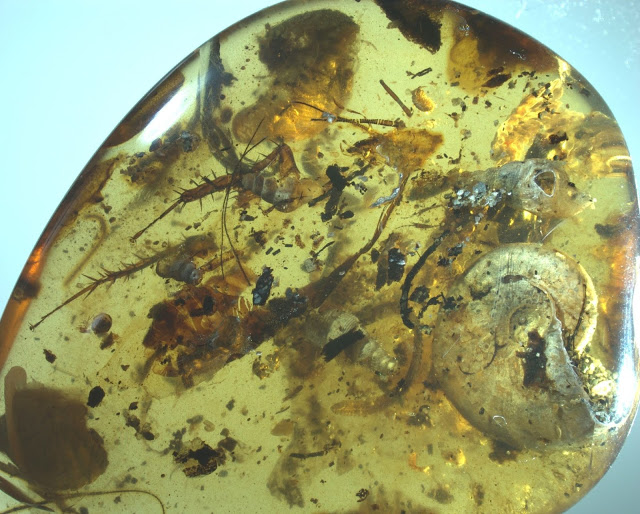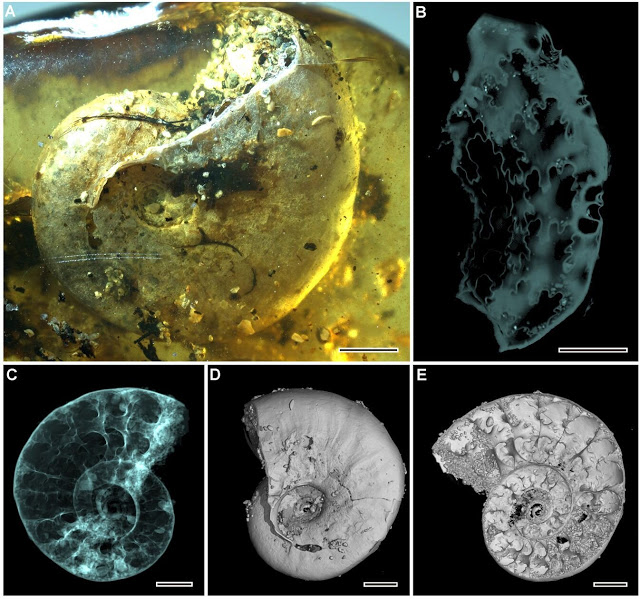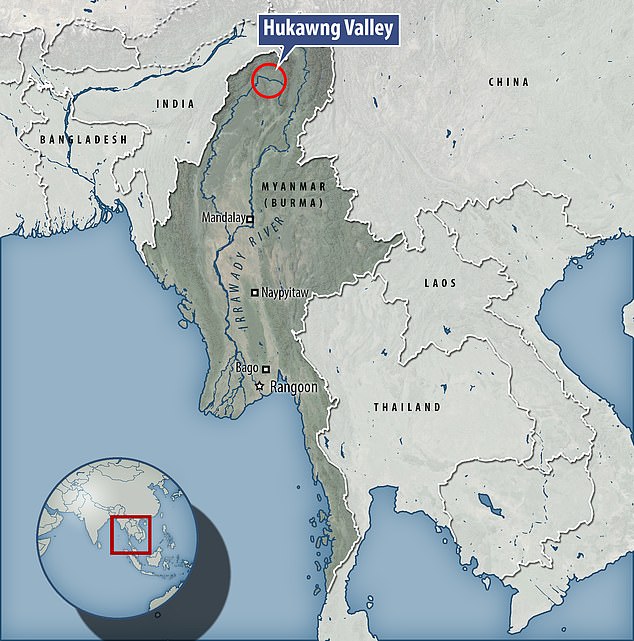Another imponderable. Lots of things get trapped in amber but most are land mased animals and insects – or freshwater (from a wetland environment). One can think of dragonflies for example. Now, a Chinese researcher has found the first known ammonite trapped in amber – and ammonites are deep sea animals. It came from the Myanmar amber bed (in Burma). These amber beds also include sea snails and sea slaters … all marine species. At https://archaeologynewsnetwork.blogspot.com/2019/05/coastal-organisms-tr… …
 … …
… …  … However, the ammonite seems to have been an empty shell when it was entrapped as no soft tissue is evident. The organism appears to have been long dead by the time it was engulfed in tree resin (or the sap of an extinct conifer species). See also www.dailymail.co.uk/sciencetech/article-7024241/ .. which has the same story but presented in a different manner …
… However, the ammonite seems to have been an empty shell when it was entrapped as no soft tissue is evident. The organism appears to have been long dead by the time it was engulfed in tree resin (or the sap of an extinct conifer species). See also www.dailymail.co.uk/sciencetech/article-7024241/ .. which has the same story but presented in a different manner …
 … the researchers write – amber is fossilised tree resin and inclusions usually comprise terrestrial, and rarely, marine organisms. Spiders, millipedes, cockroaches, beetles, flies, ants and wasps are commonly found in amber. Ammonites are a common fossil in the UK, particularly in Jurassic geology. Many ammonites have been ploughed up by farmers in Aylesbury Vale and district and they aren't confined to the Jurassic coast of Dorset. They are best known for their spiral shell and they were wiped out at the same time as the dinosaurs at the K/T boundary event. Their closest living relatives are squids, octopus and cuttlefish. They ate jelly fish, shrimps, and small marine creatures, using their tentacles to probe the sea floor. Not exactly the sort of thing you would find hanging around coastal regions – but no doubt the tide did pull them in. This particular ammonite was presumably left lying on the beach, washed up by the sea, but how did the tree resin get to preserve it.
… the researchers write – amber is fossilised tree resin and inclusions usually comprise terrestrial, and rarely, marine organisms. Spiders, millipedes, cockroaches, beetles, flies, ants and wasps are commonly found in amber. Ammonites are a common fossil in the UK, particularly in Jurassic geology. Many ammonites have been ploughed up by farmers in Aylesbury Vale and district and they aren't confined to the Jurassic coast of Dorset. They are best known for their spiral shell and they were wiped out at the same time as the dinosaurs at the K/T boundary event. Their closest living relatives are squids, octopus and cuttlefish. They ate jelly fish, shrimps, and small marine creatures, using their tentacles to probe the sea floor. Not exactly the sort of thing you would find hanging around coastal regions – but no doubt the tide did pull them in. This particular ammonite was presumably left lying on the beach, washed up by the sea, but how did the tree resin get to preserve it.
